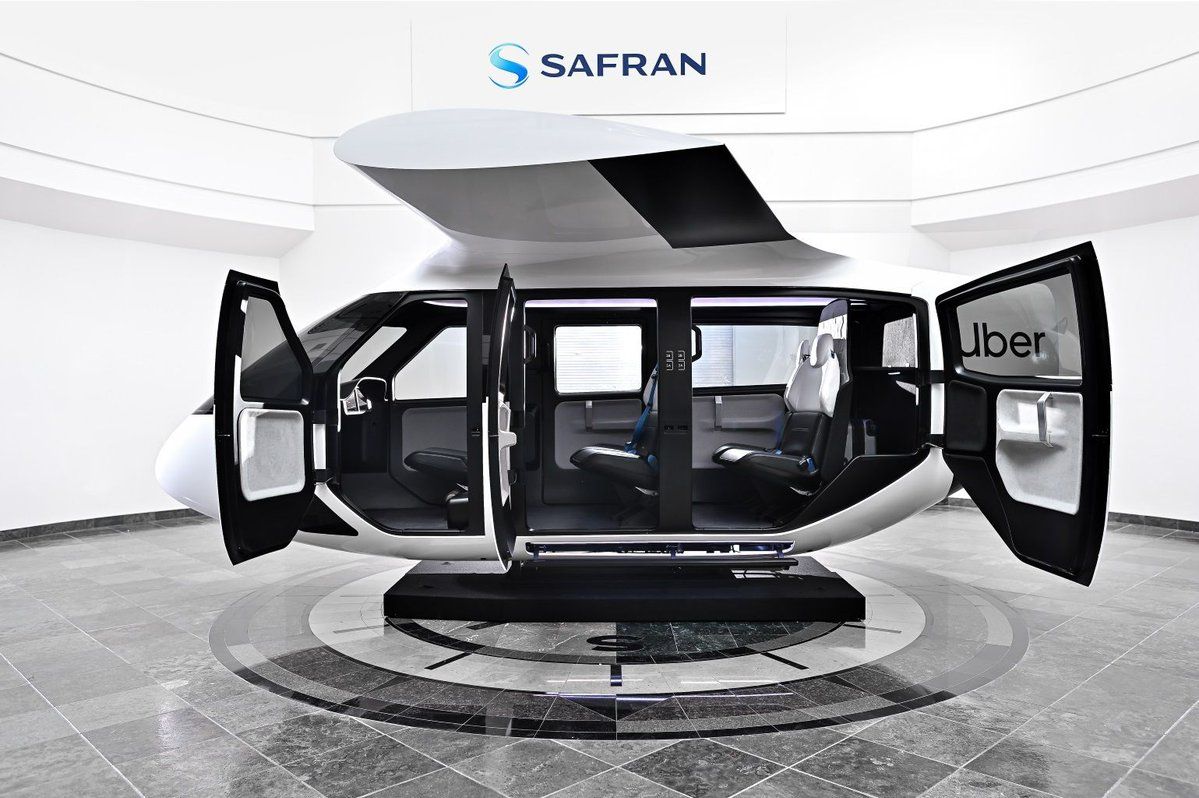By Anastasia Gurskaya, 2nd year Biochemistry
Making flying cars a reality has been an ambitious concept for decades and it appears that the efforts have finally come to fruition.
With the breath-taking speed at which the technology progresses, it really is no wonder that our day-to-day lives are starting to look increasingly like science fiction. Now, it seems that yet another much loved attribute of the genre is making an entrance: flying cars.
Uber Air is at the forefront of the effort, planning to start commercial operation for their flying taxi in 2023 while the test flights were approved by Federal Aviation Administration (FAA) are to begin next year in Dallas and Los Angeles. The only city outside of the US chosen for the trials is Melbourne, Australia.
Uber claims that their 'air taxis', also called electrical vertical take-off and landing vehicles (eVTOLs), are quieter, safer, and more eco-friendly than helicopters. They are able to carry four passengers each, have luggage space and are equipped with seatbelts. At the speed of around 200 miles per hour, eVTOLs are able to carry the passengers across the city in minutes. Starting from $5 per mile for short flights, the cost is estimated to go down eventually, promising to be price-competitive with UberX for a similar trip. A pilot will be in the vehicle to control it, however there are plans to eventually just use a ground-based safety pilot for the autonomous craft.
The service will operate using the Uber app, allowing passengers to travel across a network of 'Skyports'. 'Skyports' are launch pads required to handle up to 1,000 landings per hour that were designed by top architecture and engineering firms. They will also incorporate shopping and lounging areas, as well as restaurants and perhaps even parks.
Dr Mike Bromfield of the Institute for Future Transport and Cities at Coventry University has identified more than 150 similar projects in their database. Concepts range from fixed-wing aircraft to drone-style quadcopters and hybrids that combine propulsion systems. The UK is number two in the world behind the US in the top spot, with two UK companies based locally in Bristol – Vertical Aerospace and Neoptera.
Other start-ups are also hopping on the air mobility train. US company Alaka'i Technologies demonstrated an electric drone with a five-person capacity, while the American-Israeli start-up Next Future Transportation (NFT) has high hopes for its folding-wings vehicles.
We're thrilled to be working with Alaka'i Technologies to help develop the global launch strategy for debuting Skai, the world’s first hydrogen-powered electric vertical takeoff and landing vehicle, in collaboration with MAG PR. https://t.co/LhtZ8C5YZ1 pic.twitter.com/8SANFNlddJ
— Aliste Marketing (@AlisteMarketing) July 8, 2019
Alaka'i claims that its hydrogen fuel cells powered transporter Skai, co-designed by Designworks, is able to cover up to 400 miles in one run and has a top speed of 118 miles per hour. The test-flight program is waiting to be approved by FAA at the moment, but the company is set to enter a variety of air-mobility markets that includes not only commercial but personal ones as well.
Next Future Transportation designed ASKA as a dual-purpose vehicle that is able to both move on the road and fly in the air depending on the need. It was stated that the vehicle can fly for up to 350 miles in one go with a single passenger and that AI for collision avoidance has been developed. The test flights will begin next year and there are plans to start selling the hybrid in 2025. According to NFT, the first ASKAs will cost around $200,000 which will eventually drop to around $50,000.
Other start-ups competing in this market are Terrafugia and Kitty Hawk. On top of that, Rolls-Royce joined the trend last year with a vehicle it says can become airborne by 2020.
These #Uber Air "skyports" could be built in Dallas, Los Angeles and Melbourne. #construction #cities #avgeek #infrastructure pic.twitter.com/GCKs9hScPB
— Evan Kirstel (@evankirstel) July 9, 2019
The idea of air travel becoming a part of day-to-day city commutes is exciting and highly anticipated. The amount of time people in big cities spend in traffic jams is staggering. According to INRIX, in 2017 drivers in the UK spent 74 hours per year in traffic jams in our major cities. This time could well be used for something way more pleasant and productive. Uber Air becoming reality would be a massive time saver for those commuting during rush hours and can alleviate transport congestion on the ground.
There are, of course, concerns about safety and affordability; however, the test flights will allow the former to be evaluated, and the gradual decrease in price as the vehicles become increasingly utilised and pooled will take care of the latter, to an extent. The upcoming boom in the flying vehicle market promises a variety of choice for personal and other commercial uses as well. This will no doubt come with its own up- and downsides.
All in all, it is time to admit that we indeed are entering the proper sci-fi era and it will be thrilling to see where it will take us in the near future.
Featured image credit courtesy of Uber & Safran
Do you think we'll be commuting across cities in flying cars anytime soon? Let us know!







